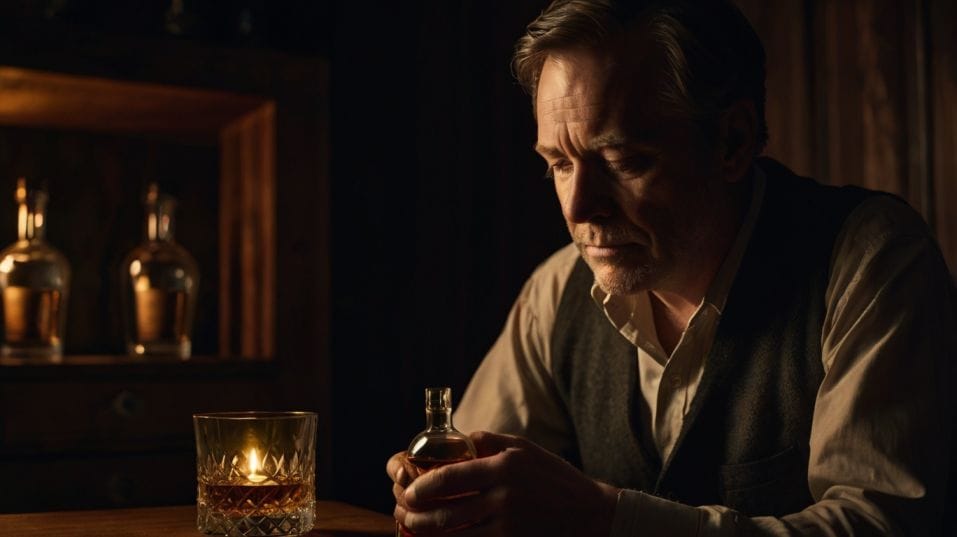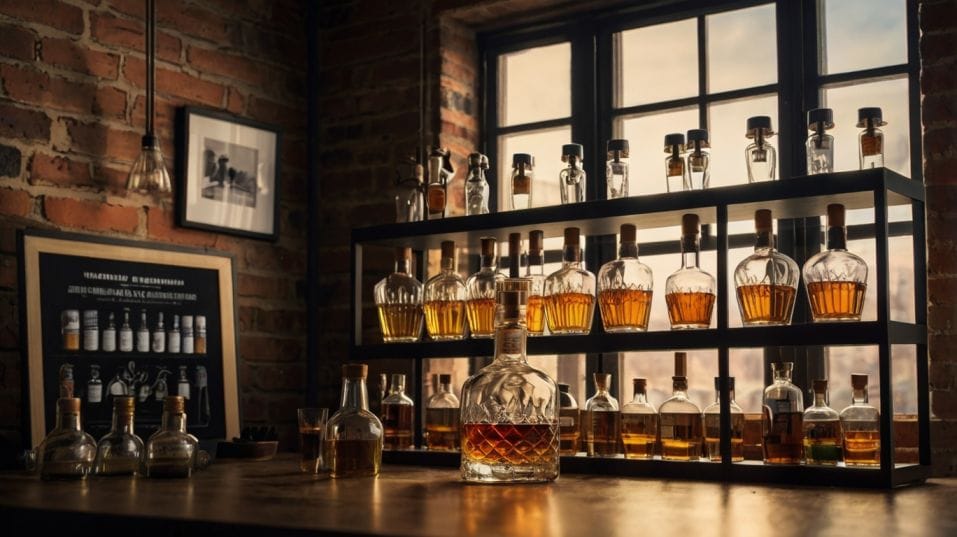Whiskey Investing vs. Wine: Key Differences
Curious about whiskey investing? Learn how it differs from wine—so you can collect smarter, store easier, and taste with confidence.

Ever wondered if that bottle of whiskey on your shelf could be more than just a drink? You’re not alone.
More collectors are exploring whiskey as a serious investment—but it’s not the same game as wine. From aging to storage to long-term value, whiskey plays by different rules.
Understand those differences early, and you’ll collect with confidence, avoid rookie mistakes, and enjoy every sip along the way.
Whiskey Stops Aging. Wine Doesn’t.
This is the first—and most crucial—difference. Wine continues to evolve after bottling. That can be beautiful. It can also be unpredictable.
The structure breaks down. Acidity mellows. Tannins soften or vanish. The same bottle can go from sublime to shot in a matter of months depending on how it's stored or when it’s opened.
Whiskey matures in the barrel. Once bottled, it’s locked in. An 18-year-old whiskey that hits shelves today will taste exactly the same five years from now—assuming it’s stored correctly (cool, upright, out of sunlight).
That consistency matters. It means you can evaluate a bottle’s flavor and know what you're getting. There’s no gamble about whether it's “drinking well.” It either is, or it isn’t.
For investors, this offers rare clarity. You can buy with confidence that the flavor won’t degrade over time.
You can taste a sample bottle while holding another in your collection. You can share, learn, and refine your palate without compromising the value of your stash. Wine can't offer that same flexibility.

Scarcity in Whiskey Is Built In, Not Manufactured
In wine, scarcity can be an illusion. Vineyards make limited runs, sure—but there’s always next year’s vintage. Labels change hands.
Production methods shift. Even “limited” runs can stretch into thousands of bottles. The lines get blurry fast, especially when marketing steps in.
Whiskey is more blunt about scarcity. If a distillery releases a batch of 1,200 bottles from a single cask, that’s it. That cask is empty.
There is no next vintage. If it’s a 30-year-old single malt from a mothballed distillery, it’s genuinely irreplaceable.
That makes whiskey easier to track and understand as a collectible. Bottling dates, batch numbers, cask types—they're right there on the label. You can see how many bottles were released. You can verify when and where it was aged.
You don’t need a Master of Wine degree to follow the trail. With a bit of curiosity and a disciplined palate, you can separate hype from heritage—and start making smart buys.
Real scarcity also means fewer artificial price swings. There’s no harvest next year to replace a discontinued bottle. When it’s gone, it’s gone.
That drives long-term value—not just hype-fueled spikes. If you’re playing the long game, that’s exactly what you want.
Storage Is Less Fussy, Less Risky, and Way Cheaper
Wine demands perfect conditions. Humidity, temperature, light, vibration, even the orientation of the bottle. Get one thing wrong, and you risk spoiling a bottle worth thousands. The margin for error is razor-thin.
Whiskey? Much simpler. Keep the bottle upright (to avoid degrading the cork), out of direct light, and at a stable room temperature—ideally between 15–20°C (59–68°F).
That’s it. No humidifiers, no wine fridges, no complicated racking systems. It can live on your shelf without drama.
That simplicity gives you room to actually enjoy your collection. You can open a bottle, sample a pour, and keep the rest intact for years. It won’t oxidize in days like wine. It won’t spoil from a brief temperature swing.
That makes whiskey both a safer investment and a more enjoyable one. You’re not just collecting assets. You’re collecting experiences—bottles you can actually open, taste, share, and still hold value on.
Whiskey Markets Reward Understanding, Not Just Labels
Wine pricing lives in the shadows of critics, auctions, and vintage rankings. Parker scores. Grand Cru status. Chateau clout.
Unless you’re deeply embedded in the world of fine wine, it’s easy to get burned chasing hype or trusting the wrong source.
Whiskey has its own culture, but it’s easier to decode. Value tends to follow a clearer logic: age, rarity, distillery history, cask type, and production method.
Limited runs from legendary distilleries (especially ones that have closed) command consistent demand. Certain regions—like Islay or Campbeltown—carry distinct identity.
Cask strength or single-cask releases tend to rise in value faster than mass-market blends. None of this is guesswork. You can track it. You can learn it.
That doesn’t mean the market is emotionless. It’s still human. But the path to insight is open. Study flavor. Learn how maturation works.
Understand the difference between a first-fill sherry cask and a refill bourbon barrel. That’s how you build your edge—not just by chasing brands or price tags.
You Can Learn as You Go—Without Burning Capital
Wine punishes curiosity. Every time you open a bottle, you're rolling the dice. Was it stored right? Is it past its prime? Should you have decanted it longer?
The only way to know is to drink—and by then, it’s too late to course-correct. That bottle’s gone.
Whiskey gives you room to explore. Open a bottle, pour a glass, reseal it, and come back a week later. Or a month. Or a year. Use it to train your palate.
Compare it to a younger expression. Share it blind with a friend. All without hurting the bottle’s value in a meaningful way.
That approachability makes whiskey a more dynamic collecting experience. You're not sitting on dead stock. You're learning, tasting, evolving—with every bottle you buy.
And the more you taste, the better you get at spotting flavor signatures, market patterns, and future value. You become the expert—not just a bystander to someone else’s tasting notes.
Final Thoughts
Whiskey isn’t wine. That’s a good thing. It’s more stable, more transparent, easier to store, and far more enjoyable to learn from.
It doesn’t require a cellar or a sommelier. It rewards your attention, your taste, and your ability to think a few moves ahead.
If you’re just starting to collect, resist the urge to chase brands or trends. Look deeper. Study scarcity. Taste broadly. Track what you love. Then start building. One bottle at a time.
You don’t need a six-figure budget to play this game. You just need the right mindset—and a willingness to learn from the glass up. So pick a bottle with a story. Pour a dram. Ask what it’s trying to tell you. That’s how a real collection begins.




